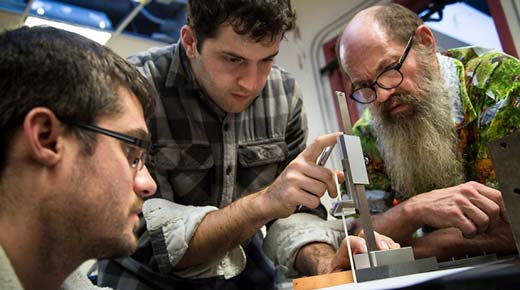Matt Bianchi had a problem. As chief of the division of sleep medicine at Massachusetts General Hospital, he needed a better way to diagnose sleep disorders. Typically, a patient seeking a diagnosis needs to come into a sleep lab and be attached to a number of devices. This setting is hardly representative of the patient’s normal sleep environment. Bianchi needed a way to track and measure sleep at a patient’s home.
|
ADVERTISEMENT |
Bianchi outlined this problem in a recent presentation to the students of 2.75 (Medical Device Design). The class brings clinicians from Boston-area hospitals and MIT students together to design prototype devices that help solve problems identified in the clinic.
“We use the design of medical devices as a vehicle to teach a deterministic design process,” says course instructor, professor Alexander Slocum.
Medical devices offer students an opportunity to work on something they can personally relate to since at some point in their lives, either they or a loved one has needed to use one. “The more we can do to make medical devices simpler, lower cost, and better performing, the more we help not only the world, but ourselves,” Slocum explains.
…

Add new comment